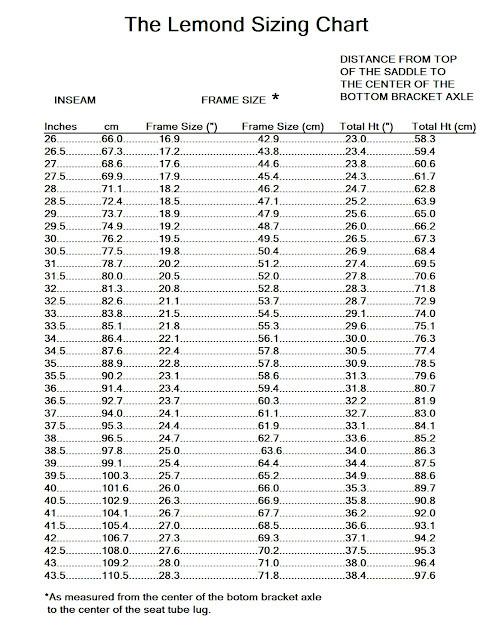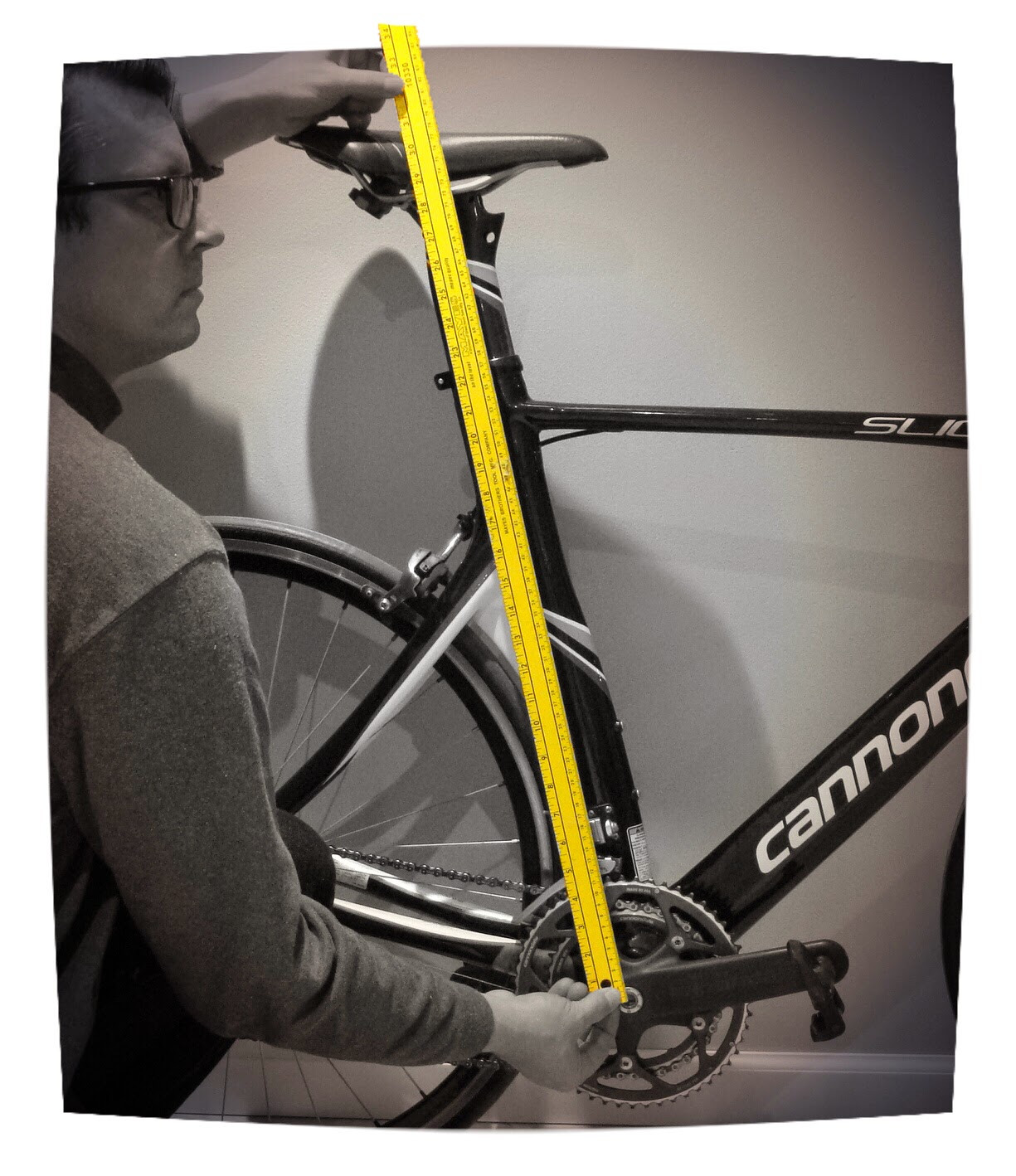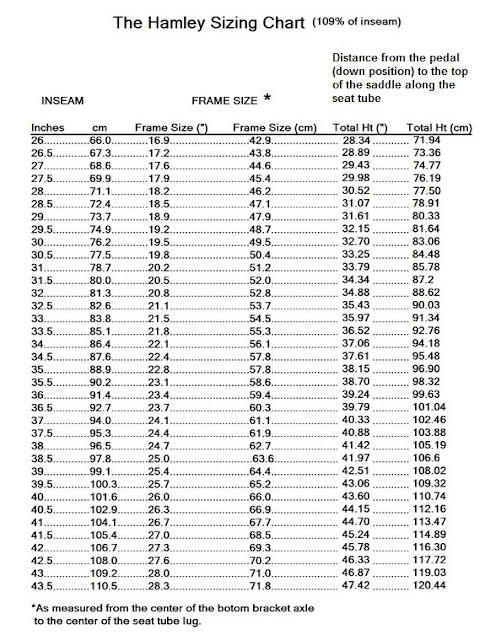Getting the right size bike and setting your saddle height correctly are fundamental for any cyclist, from beginners to seasoned riders. Optimal bike fit isn’t just about comfort; it’s crucial for maximizing power, efficiency, and preventing injuries. Among various sizing methods, the Lemond Bike sizing approach stands out as a scientifically-backed and road-tested technique for achieving an ideal riding position.
Understanding the Lemond Sizing Method
The Lemond sizing method, popularized by the cycling legend Greg Lemond in his “Complete Book of Bicycling,” isn’t solely his creation. It’s rooted in the research of Dr. Ginet and was refined under the supervision of Cyrille Guimard. This method focuses on determining the saddle height that allows for approximately 96% of full leg extension. This level of extension is considered optimal for power output and cycling efficiency.
The Lemond bike sizing chart simplifies the process by using a calculation based on your inseam measurement. It multiplies your inseam by 0.883 and then considers average shoe and cleat thickness to provide frame size and saddle height recommendations. These measurements are taken along the seat tube angle, from the center of the bottom bracket to the top of the saddle. The beauty of the Lemond bike sizing chart is that it removes complex math, making it easily accessible for all cyclists.
How to Use the Lemond Sizing Chart for Your Bike
Using the Lemond bike sizing chart is straightforward. First, you need to accurately measure your inseam. Here’s how to do it:
- Stand with your back against a wall, wearing socks and cycling shorts or similar thin clothing.
- Place a 2-inch hardcover book snugly between your legs, mimicking the pressure of a saddle.
- Ensure the book is level and pressed firmly against the wall.
- Mark the wall at the top edge of the book.
- Measure the distance from the floor to the mark on the wall. This is your inseam. For accuracy, repeat this measurement a couple of times and take the average.
Once you have your inseam measurement, consult the Lemond bike sizing chart. Locate your inseam range in the left column to find the corresponding recommended frame size and saddle height. The frame size is typically measured from the center of the bottom bracket to the center of the seat tube lug. The saddle height is measured from the center of the bottom bracket to the top of the saddle, along the seat tube angle. It’s important to note that these measurements are based on traditional frame geometry. For bikes with sloping top tubes, adjustments might be needed, and it’s always best to cross-reference with manufacturer size guides.
Lemond Method vs. Hamley Method: Choosing the Right Approach
While the Lemond bike sizing method is widely respected, another method, known as the Hamley Method, also exists. The Hamley Method, based on research from Hamley and Thomas (1967), suggests a saddle height that is 9% greater than the inseam measurement taken from the pedal in the down position to the top of the saddle. Further studies by Faria and Cavanagh (1978) and Nordeen-Synder (1977) explored variations around this percentage for optimal power and efficiency.
Nordeen-Synder’s findings, suggesting 107% of inseam length for maximum efficiency, closely align with the Lemond bike sizing chart recommendations. The primary difference lies in the intended cycling discipline. The original article suggests that the Lemond chart is ideal for road racers and time trialists, while the Hamley method might be more suited for track sprinters, who may benefit from a slightly higher saddle for short bursts of power.
For most cyclists, especially road riders focused on endurance and efficiency, the Lemond bike sizing chart provides a solid starting point. Even if your current frame doesn’t perfectly match the chart, the saddle height recommendation remains highly relevant and can be adjusted on almost any bike.
Beyond Saddle Height: Fine-Tuning Your Bike Fit
While saddle height is paramount, other aspects contribute to overall bike fit. Saddle position, for example, plays a role. A neutral, flat saddle position is generally recommended. The UCI rule requiring the saddle nose to be at least 5cm behind the bottom bracket vertical plane is a guideline worth noting. Handlebar width and stem length are also crucial. Handlebar width is often suggested to match shoulder width for comfort and control. Stem length influences your reach and body position. Aerodynamics, comfort, and handling are all factors to consider when adjusting handlebars and stem.
Conclusion: Ride with Confidence and Comfort
The Lemond bike sizing method offers a reliable and science-backed approach to finding your ideal bike size and saddle height. By using the Lemond chart and carefully measuring your inseam, you can take a significant step towards optimizing your cycling experience. Remember to consider other fit parameters and fine-tune your setup for ultimate comfort, efficiency, and enjoyment on every ride. For further exploration of bike sizing, Greg Lemond’s “Complete Book of Cycling” remains a valuable resource.



